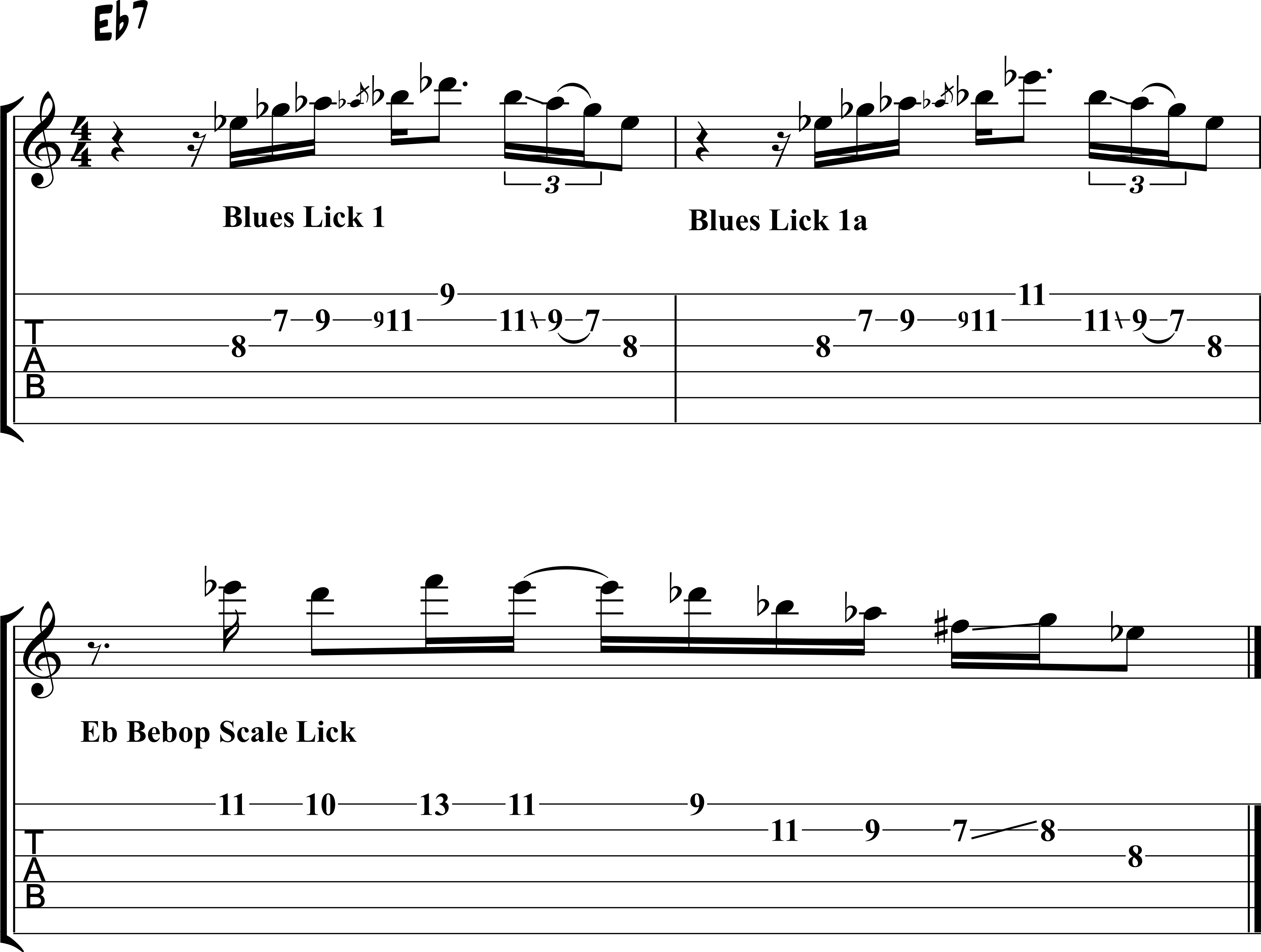Breaking Down a Classic Wes Montgomery Line
Learning how to play jazz guitar means analyzing and internalizing lines from the legendary players that have helped shaped the jazz-guitar tradition.
In this lesson, you break down one of my favorite Wes Montgomery lines from his solo on the tune “Movin’Along.”
Below, you learn how to play the line, and you understand the concepts behind the line so you can improvise similar lines in this Wes style.
Have fun getting this line under your fingers, onto the fretboard, and expanding on each of these melodic concepts in your playing.
The Line
On the recording, the line lands on bars 6, 7, and 8 of the progression.
The lick happens at 2:28 of Wes’ solo and is played originally over 1 bar of Ab7 and 2 bars of Eb7.
Though there’s an Ab7 in the original first bar, I like to apply this line to 3 bars of Eb7, as it fits very nicely and sounds great over that chord.
Because of this, I’ve extracted this lick from Wes’ solo and written it out over 3 bars of Eb7 to explore further over that dominant chord.
Wes Analysis Line Audio

The lick is built with a blues scale motive in bar 1, which is then slightly altered in bar 2, before finishing the line with a bebop scale phrase in bar 3.
To begin, learn this line as written; keeping in mind the building blocks that Wes uses in this phrase, the blues motive and bebop scale.
Once you have this line memorized, solo over a blues backing track and add this line into your solos to get a feel for how it fits into your soloing vocabulary.
Concept 1 - Blues Scale
The first 2 bars come from an Eb minor blues scale, featuring slides that give the line that “slippery” sound Wes was known for.
You can take this idea and apply it to your own playing by using minor blues scales to solo over dominant 7th chords, over a blues or other progressions.
We often forget about the minor blues scale when soloing over jazz blues tunes in place of more complex modes and arpeggios.
This line is a solid reminder of how powerful and essential the minor blues scale is when playing over jazz progressions.
Concept 2 – Blues Motives
What makes the first two bars so memorable in this line, is the use of repetition.
Wes plays a slick sounding motive in bar 1.
Then, he repeats that motive in bar 2, while changing the highest note from a Db to an Eb.
This allows Wes to develop a connection with the audience and prevent the line from becoming predicable with the altered last note.
He then finishes off the phrase with the addition of the bebop influenced line in bar 3.
To practice this approach to soloing organization, jam over a backing track and play:
- Bar 1 – Short Blues Phrase
- Bar 2 – Repeat Blues Phrase
- Bars 3-4 – Bebop Phrase
Organizing your solos is a big step in the development of any jazz guitarist, and it allows you to expand on the phrases you already have in your vocabulary.
Concept 3 - Bebop Scale
The line finishes with a bebop scale phrase that has one blues note added for good measure.
The Eb bebop scale is built by adding a major 7th interval, the D you see on the 2nd beat of the last bar, to the Mixolydian mode.
This produces an 8-note scale with the notes/intervals:
Eb F G Ab Bb C Db D Eb
R M2 M3 P4 P5 M6 m7 M7 R
The added major 7th interval creates tension and release over 7th chords and is a staple sound in the vocabulary of every jazz guitarist.
As well, there’s a blues notes, F#/Gb, at the start of beat 4 in this phrase.
When soloing over 7th chords, moving from b3 to 3, as you see here with F# to G, is a sound that Wes, and every jazz guitarist, enjoys exploring in their solos.
There’s also an enclosure in the first four notes of the phrase, Eb-D-F-D.
To explore that idea further, any time you have a chord tone, such as the root as you see here, you can play root – fret below – tone above – root.
So, for the note G this would be G-F#-A-G, for Bb it would be Bb-A-C-Bb, etc.
Enclosures organize tension and release in your solos and give you that sophisticated jazz sound that Wes had down in his playing.
As you can see, by breaking down this short line, you get a cool-sounding phrase under your fingers and learn new soloing concepts at the same time.
Check out this line and the larger improvisational techniques used by Wes in your practice routine to open new avenues of exploration in your solos.
Then, when ready, pick one of your favorite lines and learn/analyze it in a similar fashion to see what guitar goodies you can find inside that phrase.
